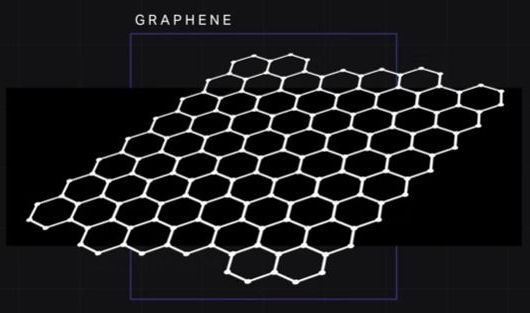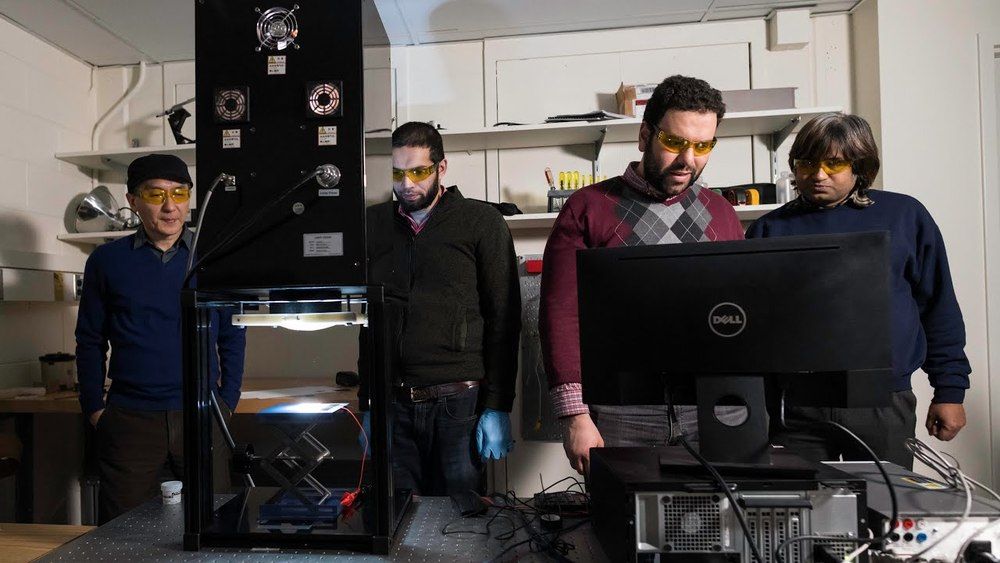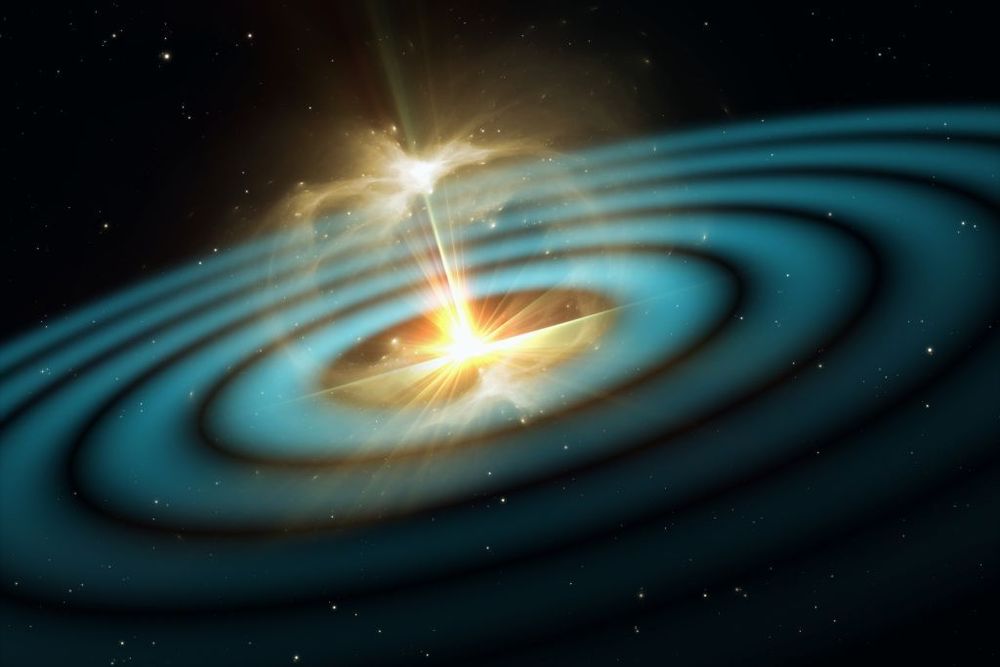Graphene is an allotropic form of carbon and posses some of the unique properties that are making this compound stand out of all other allotropic compounds of carbon. The compound was discovered in modern ages by two scientists Andre Geim and Konstantin Novoselov from the University of Manchester, UK. After its initial discovery the compound soon began to make impact on every field of life and in recognition to their work they were awarded a physics noble prize in 2010. Graphene has unique physical and chemical properties and is much lighter, flexible and strong than many previously existing compounds.
Category: physics – Page 228
The University of Rochester research lab that recently used lasers to create unsinkable metallic structures has now demonstrated how the same technology could be used to create highly efficient solar power generators.
In a paper in Light: Science & Applications, the lab of Chunlei Guo, professor of optics also affiliated with Physics and the Material Sciences Program, describes using powerful femto-second laser pulses to etch metal surfaces with nanoscale structures that selectively absorb light only at the solar wavelengths, but not elsewhere.
A regular metal surface is shiny and highly reflective. Years ago, the Guo lab developed a black metal technology that turned shiny metals pitch black. “But to make a perfect solar absorber,” Guo says, “We need more than a black metal and the result is this selective absorber.”
O.o.
This paper describes a new and efficient method of defining an annular region of a curl-free magnetic field with specific physics and coil properties that can be used in stellarator design. Three statements define the importance:
Codes can follow an optimized curl-free initial state to a final full-pressure equilibrium. The large size of the optimization space of stellarators.
Approximately fifty externally-produced distributions of magnetic field, makes success in finding a global optimum largely determined by the starting point.
The design of a stellarator is actually improved when the central region of the plasma has rapid transport with the confinement provided by a surrounding annulus of magnetic surfaces with low transport.
Complex cognitive dissonance disorder guaranteed. 😬.
Garrett Lisi, the so called “Surf Bum with a Theory of Everything (or T.O.E.)”, is a PhD theoretical physicist who has refused to be captured by the theoretical physics community. By making shrewd investments, he has avoided holding meaningful employment for his entire adult life. Instead, he lives in Maui and travels the world chasing the perfect wave.
In this episode Garrett and Eric sit down to discuss the current status of Garrett’s ideas for a final theory based on a mysterious object called E8, perhaps the oddest of mathematical symmetries to be found in the universe. Garrett and Eric have held each other in mutual “contempt” for over a decade. By vacationing together and staying in each others’ homes, they had hoped to hone and deepen their mutual disgust for each other’s ideas. However, as the theoretical physics community moved away from actually trying to unify our incompatible models of the physical world, it became intellectually unmoored, and drifted toward a culture of performative Cargo Cult Physics. The antagonists were thus forced by necessity to develop a begrudging admiration for each other’s iconoclasm and unwillingness to give up on the original dream of Einstein to unify and understand our world.
If you are interested in mind uploading, then I have a research paper for you to consider. One of the serious issues with mind uploading is the computer substrate. Simulating the brain will require a new and incredible computing capability. New techniques and new hardware are going to be required to make it practical. Of course, there is currently zero demand for mind uploading hardware, so the market is not going to provide this capability. However, there is incredible market demand for cutting edge hardware for machine learning and artificial intelligence. And it turns out that one potential technique for artificial intelligence simulates the way that the brain works: neuromorphic computing. And there is a relatively new type of electronic component that seems to mimic some of the functions of a brain’s neuron: the memristor. Memristors are relatively new, having only been fabricated for the first time by HP in 2008. So I am trying to keep up with the latest developments in memristive technology.
Here are some excerpts from the paper:
“…Artificial Neural Network (ANN) algorithms offer fast computations by mimicking the neuronal network of brains. A weight matrix is used in neural networks (NNs) for parallel processing that makes computing faster…The memristor has attracted much attention because of its potential to have linear multilevel conductance states for vector-matrix multiplication (output = weight × input), corresponding to parallel processing…”
Here is a web link to the research paper:
Edward Alexander Bouchet (September 15, 1852 – October 28, 1918) was an African American physicist and educator and was the first African-American to earn a Ph.D. from any American university, completing his dissertation in physics at Yale in 1876. While completing his studies, Bouchet was also the first African American to be inducted in to Phi Beta Kappa for his stellar academic performance in his undergraduate studies. Bouchet’s original research focused on geometrical optics, and he wrote a dissertation entitled “On Measuring Refractive Indices.”
Unfortunately, after completing his dissertation, Bouchet was unable to find a university teaching position after college, probably because of racial discrimination. Bouchet moved to Philadelphia in 1876 and took a position at the Philadelphia’s Institute for Colored Youth (now Cheyney University of Pennsylvania), where he taught physics and chemistry for the next 26 years. Bouchet spent the next several years in several different teaching positions around the country. In 1916, Bouchet returned home to New Haven in poor health, and died in 1918 at age 66.
Dr. Bouchet’s impact on physics still resonates today around the world. The American Physical Society (APS Physics) confers the Edward A. Bouchet Award on some of the nation’s outstanding physicists for their contribution to physics. The Edward Bouchet Abdus Salam Institute was founded in 1988 by the late Nobel Laureate, Professor Abdus Salam under the direction of the founding Chairman Charles S. Brown. In 2005, Yale and Howard University founded the Edward A. Bouchet Graduate Honor Society in his name.
How interesting. Very adorable.
A heartwarming rescue of a baby elephant with the help of physics is winning the Internet. A tweet by IFS officer Ramesh Pandey gives a glimpse of the rescue efforts made by people and officials in Gumla, Jharkhand.
According to the tweet, the forest department along with people from the nearby village rescued the elephant using the Archimedes principle. Officials and locals filled the well with water to help the elephant out. The elephant was rescued without any injury.
“Heartwarming pictures of how intelligently the team @dfogumla and villagers used Archimedes’s physical law of buoyancy to save an elephant calf who fell in a well. They pumped water into well to float the elephant to surface. Great work,” says the caption posted by Pandey.
A mysterious cosmic event might have ever-so-slightly stretched and squeezed our planet last week.
A theoretical physicist in England has won a prestigious award for her work on the theory of massive gravity, which could explain why gravity hasn’t constrained the rapid expansion of the universe. The $100,000 award honors the work of Claudia de Rham, who has worked for 10 years on a way to turn massive gravity theory into something measurable.
Cosmologists have puzzled for decades about how to marry gravity with the speed at which the universe is expanding. Gravity as we understand it would work to hold the universe together, not let it race apart from itself into eventual oblivion. Enter the counterpart to dark matter, dark energy, which is what scientists call whatever is pulling the universe apart.
She is now hopeful that advances in gravitational wave astronomy will make it possible to test the predictions of massive gravity theory within the decade.
“It would be amazing if it was shown to be right,” De Rham told The Guardian. “That may or may not happen, but what will happen is that we’ll have a much better fundamental understanding of gravity and that’s just something so deep, it’s one of the big questions today.”
READ MORE: Has physicist’s gravity theory solved ‘impossible’ dark energy riddle? [The Guardian].








